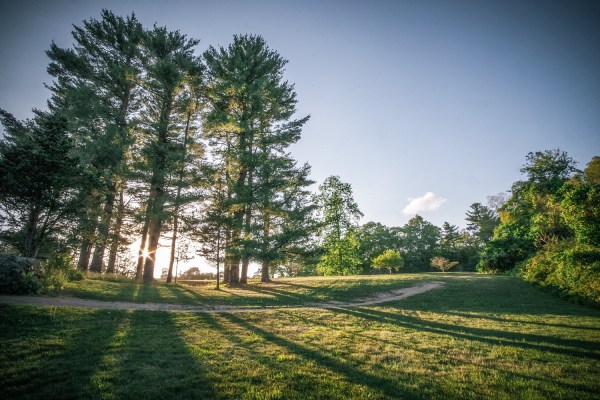Exploring the Bay Circuit Trail, a 230-mile-long recreation route in eastern Massachusetts, is like walking through our nation’s early history. The path crisscrosses cities, suburbs and rural landscapes that include farmland, cranberry bogs, idyllic woodlands, railways and many historic landmarks.
The trail passes through 37 towns around the greater Boston area, starting at Plum Island and ending at Duxbury/Kingston Bay. More than four million people, from Boston to Providence, Rhode Island, can reach the trail with an easy drive—less than an hour in many cases.

“You can get into the woods quickly and easily from a lot of urban areas,” says Beth Gula, the Bay Circuit Trail Volunteer Programs Supervisor for the Appalachian Mountain Club. “You don’t have to drive three hours or drive down dirt roads. The trail access is plentiful and easy.”
But in certain zones of the trail, heavy use, flooding and natural degradation has caused erosion, difficult accessibility, poor signage and additional problems. Starting in 2014, the Appalachian Mountain Club stepped in to coordinate local agencies and volunteers to work on trail improvement projects.
The projects focus on three main trail locations. There’s the Georgetown–Rowley State Forest on the northern end of the trail, where trail volunteers will reroute the trail and build low boardwalks. In Concord and Walden Pond on the western portion of the trail, they’ll be improving signage and extending a bridge. Lastly, there’s the Borderland State Park on the southern end of the trail, where crews will build bridges and drainages and re-route a trail to ease flooding in a wetland area. Projects should begin this fall, with the goal of completing them by the end of 2016.
“The purpose of these trail improvement projects is to create better access and protect the natural resources,” says Gula. “Whatever people go to the woods for, we want them to be able to get out there, and we don’t want them to have to ford a river to get there. Through these projects, we want to raise the standard and consistency of the trails.”
First developed in 1929 by Benton MacKaye and Charles Eliot II, the Bay Circuit Trail and Greenway passes by many historic sites, including the ruins of a 19th-century hydro-powered pencil factory, America’s oldest operating farm, and homes used as Underground Railroad hideaways in the 1850s. In Lowell, the trail goes by Kerouac Park, which celebrates the work of writer and Lowell resident Jack Kerouac, and in Concord, it traverse the shores of Walden Pond and Henry David Thoreau’s cabin.
“The trail often aligns with historic, culturally significant properties like old mills, Walden Pond and other parts of Revolutionary history,” says Gula. “Some of these locations are very celebrated and visible, but others are not.” She continues, “By better marking the Bay Circuit Trail, we’ll be able to give people a sense of what this trail is and how they can access it through their neighborhoods.”
REI will donate $5.9 million in 2015 to help care for and increase access to more than 1,000 outdoor places in the U.S.
